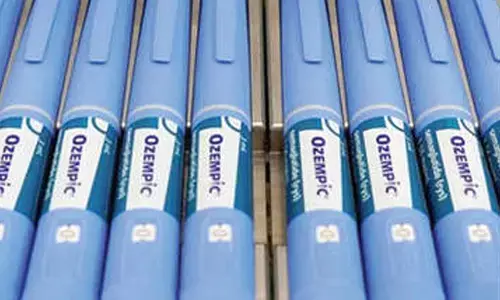Can Indo-Pacific Economic Framework reduce world's dependence on China?

The Quad’s plan would take several years to fructify, but it is moving in the right direction
The newly formed 13 member Indo-Pacific Economic Framework (IPEF) comes into being at a time when the world economy is in turmoil. At the centre is Russia's war on Ukraine but is compounded by the fact that the Covid pandemic is refusing to disappear in many countries like China. In addition, inflationary pressures are growing globally with a country like the US recording levels never seen over the past 40 years. In such a scenario, the Quad countries especially the US and India are recognising the need to forge new pacts to revive economic growth as well as to counter the pervasive influence of China in the Indo-Pacific region.
The four countries - the US, India, Japan and Australia - which are the drivers of the new economic agreement are trying hard to emphasise that it is not aimed against any country. In other words, it is not meant to be in opposition to China. The reality is, it is meant as a counterweight to the towering influence that the country has in the Asia-Pacific region. It also has to be seen in the context of the US having walked out of the broad-based trade pact, Trans-Pacific Partnership (TPP) while India did not join the China-dominated Regional Comprehensive Economic Partnership (RCEP).
There are concerns in both countries over the lack of regional trade ties that will give a boost to their economies. In India's case, many experts have warned it was a mistake to keep away from RCEP. The rationale behind staying away has been that it would have enabled China to flood the country with cheap imports via third countries. It cannot be denied that this could have been a likely scenario given the fact that Chinese goods are already becoming ubiquitous in the country in numerous sectors.
For the time being, at least, the IPEF is not being projected as a traditional trade agreement. It is positioned as an economic alliance dealing with other critical issues that have come to the fore as a result of disruption of supply chains during the Covid pandemic as well as after the emergence of the conflict in Ukraine. The four point agenda will focus on trade in the context of the digital economy, labour and environment standards, development of a supply chain network that will anticipate and prevent disruption, and clean energy along with setting up a fair economy through effective tax and anti- money laundering regimes.
While India has not yet made any comments in the area of digital economy standards, it is evident that there will be differences on the issue of data localisation. The government has only recently introduced a legislation envisaging localisation of Indian data and the creation of a Data Protection Authority, moves that the US is viewing as market access barriers to digital trade.
But these differences have been put on the backburner for the time being as the two countries are trying to unitedly push forward this new alliance in the Indo-Pacific region. So far key economic players in the area that have joined the IPEF include South Korea, Malaysia, Singapore, Thailand, Vietnam, Indonesia, the Philippines, Brunei and New Zealand. This is in addition to the Quad members, that is, India, Japan, Australia and the US
One of the priority areas for the new alliance is the issue of creating supply chains that can anticipate and present disruptions. These have been impacting industrial output globally. It began with the pandemic which led to curbs on movement of goods and services throughout the world. It was when these resumed that the resulting congestion at ports and inability to match output to demand led to supply chain disruptions. Russia's invasion of Ukraine aggravated the situation as it affected supplies from both these countries. It worsened further with the resurgence of Covid in China and the clamping down of strict movement curbs there. Supply chain disruptions have thus been virtually normalised in the world economy over the last two years, a fact which has led the new alliance to try and forge a compact that can prevent their recurrence.
As a measure of commitment towards achieving this goal, the Quad has now announced a 50 billion dollar investment towards developing infrastructure in the Indo-Pacific region. In particular, the group has mapped out vulnerabilities in global semiconductor supply chains and will work towards creating diverse and competing markets in this sector by leveraging the individual strengths of each country. It must be recalled that the issue of developing a semiconductor supply chain was outlined at the last Quad summit as well. It is now being sought to be made a reality with the injection of sufficient funds.
It is here that clearly these four countries are trying to reduce the world's dependence on China for the ubiquitous chips that are embedded in virtually every electronic product nowadays. Though most chips are supplied from Taiwan and South Korea, these are typically manufactured over several locations in different countries. But there is no doubt that Taiwan is one of the main suppliers and components are also manufactured in China.
It goes without saying that in the hypothetical event of China taking over Taiwan militarily, manufacturing units around the world would face chip shortages. The Quad's plan would take several years to ultimately fructify but it is moving in the right direction. There is no doubt these plans will extend to the new economic alliance as many of its members are powerhouses in the technology sector.
There are many naysayers for the IPEF, arguing that it will not be possible to diminish China's influence in the region. But it cannot be denied that it is a worthwhile effort to enter into linkages with key Asia-Pacific economies in sunrise areas like clean energy and semiconductors. One can only hope the alliance leads to substantive outcomes, not just for India but for the entire Indo-Pacific region.
















